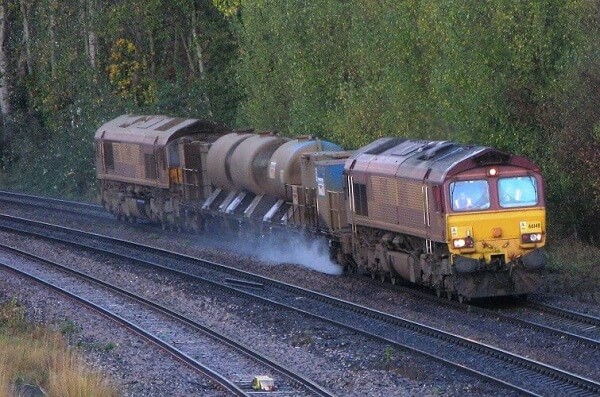
Every three hours, a person or vehicle in the United States is hit by a train. While some of these accidents occur at train crossings, a larger portion of fatalities occur when people or vehicles stray onto private railroad property. Walking the rails as a shortcut between Point A and Point B can be a very dangerous and deadly proposition, as we have seen locally in recent months.
Trespassing on Railroad Property
We’ve all seen it in the movies – a traveler setting off on a journey by following a set of railroad tracks or hopping an empty boxcar for a ride. As romantic as this notion might seem, in reality it’s illegal and dangerous. Railroad tracks are actually private property, owned and managed by the railroad companies. Only authorized personnel should be on the tracks, and the general public should only cross the tracks at designated train crossings.
Passive Warning Signs vs. Active Warning Devices
How a railroad crossing is marked can depend on its location. Most public crossings have a minimum of passive warning signs, such as crossbucks, yield signs, stop signs, and pavement markings. Some public crossings, particularly those with a high traffic volume, are equipped with crossing arms, which are activated when a train triggers a switch at a specific point on the rail line. These active warning devices stop traffic from entering the tracks by creating a barrier; once the crossing arms activate, a train will be entering the intersection within 20 seconds.
The Physics of Trains
Freight trains can travel at speeds up to 60 miles per hour and can be 1 to 1 ¼ miles in length (90 to 120 cars). Because of their size and length, it can seem that trains are moving much more slowly than they actually are. However, a train consisting of 100 cars, moving at 55 MPH, can take up to a mile to come to a complete stop – that’s nearly the length of 18 football fields! What’s more, the path of a train is limited to its rails – it can’t veer in another direction in the same way a vehicle can. The size and physical nature of trains is the primary reason they have the right of way in a traffic situation.
Things to remember
- Trains have the right of way, since they cannot stop quickly.
- Railroad tracks are private property – if you are on or near the tracks at any other location than at a crossing, you are trespassing.
- The contact surface between train wheels and the rail is only about the size of a dime. This small area of contact means less friction available to aid in stopping.
- All drivers are required by law to stop completely at a rail crossing when the lights are flashing; drivers must wait until the approaching train has cleared the crossing before proceeding across the tracks.
- It is against the law to drive around lowered crossing gates; you must either wait or drive to another crossing where the lights and/or gates are not engaged.
- Federal law requires that all trains sound their horn at all highway-rail grade crossings.
- It is against the law to stop a vehicle on a railroad crossing.
- If your vehicle stalls on a railroad crossing, get out immediately, move away from the tracks, and call 911.
- Hazards at railroad crossings can be reported directly to the railroad by calling the 800 number posted on signage located at the crossing, or by dialing 911.
- Never, ever, try to beat a train. It’s a race you will lose.
When a vehicle or pedestrian is hit by a train, the legal ramifications of that event hinge largely on who was at fault. If a signal or crossing arm fails to operate, the railroad could be at fault. If the injured party violated any traffic laws (such as attempting to snake through a crossing with the gates down) or was trespassing on railroad property, fault may lie with the victim. If you or a loved one have been involved in an accident with a train, contact an attorney. Determining fault requires a careful examination of all the facts, something that an experienced attorney will do prior to deciding if you have a case.
Better yet – avoid mixing it up with a train. Stay off the tracks and away from railroad property except where the tracks and roadway intersect. When the red lights begin to flash and the crossing arms come down at a railroad intersection, resist the temptation to snake through the gates to the other side. No one likes waiting on a train, especially when you’ve got places to be, but those crossing arms are there to keep you out of harm’s way.
